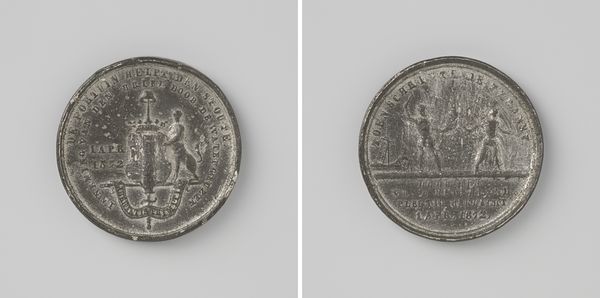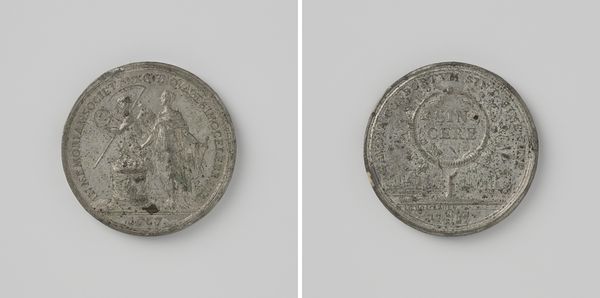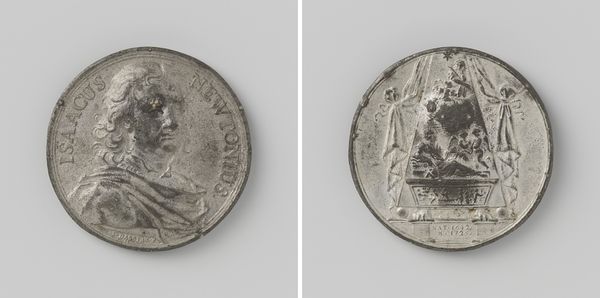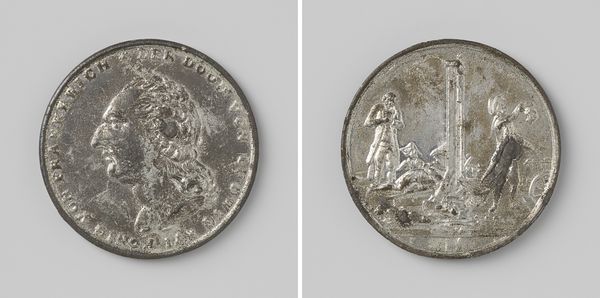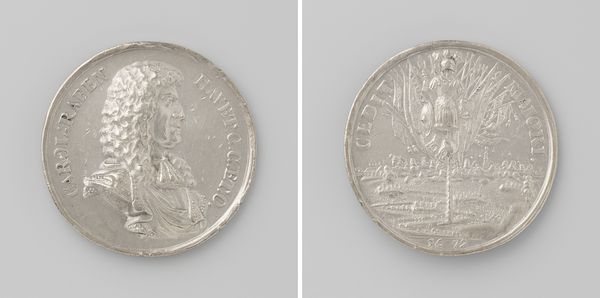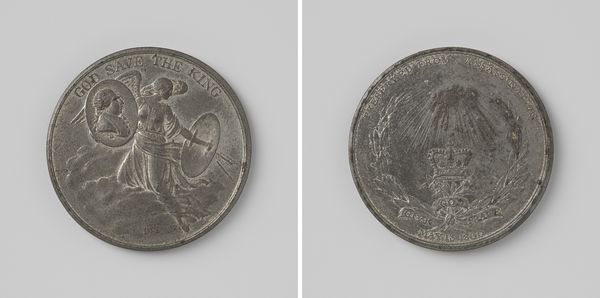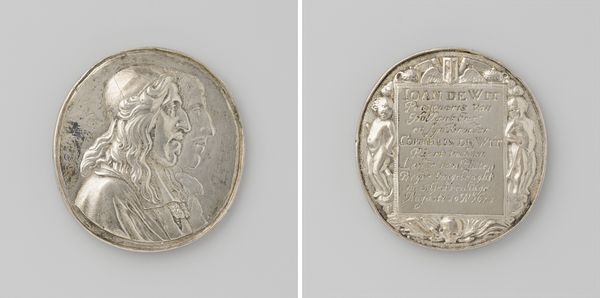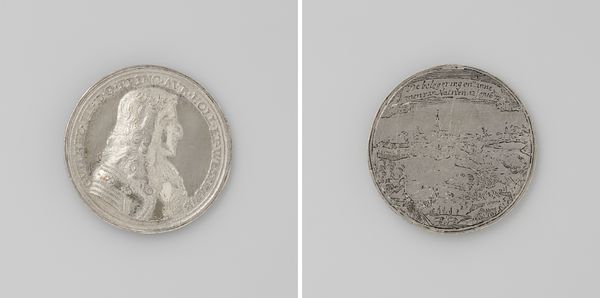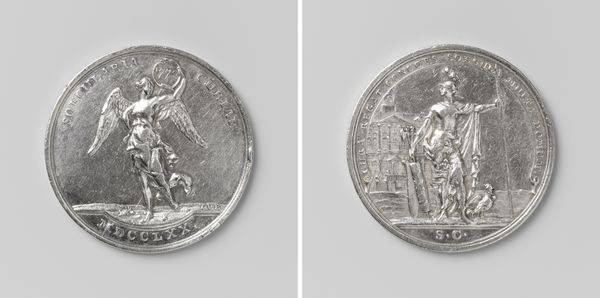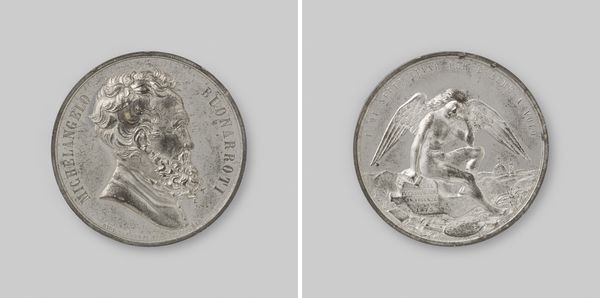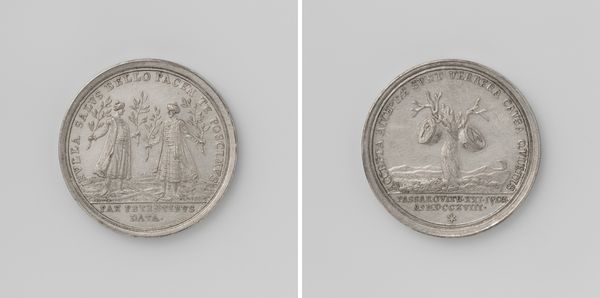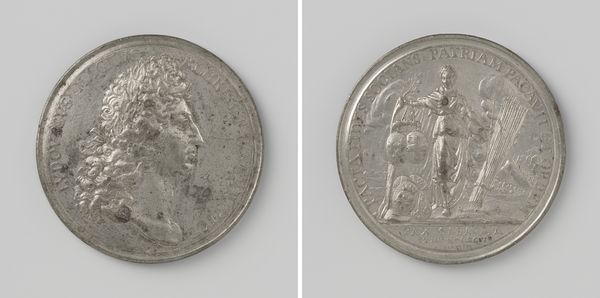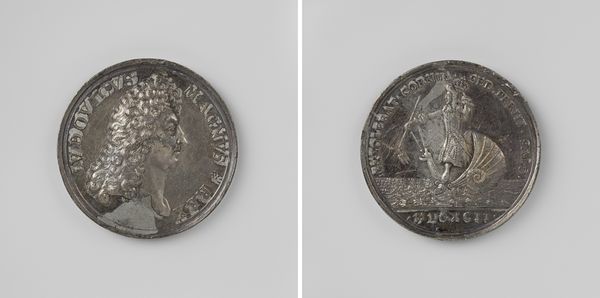
print, metal, relief, engraving
#
dutch-golden-age
# print
#
metal
#
relief
#
history-painting
#
engraving
Dimensions: diameter 3.1 cm, weight 10.51 gr
Copyright: Rijks Museum: Open Domain
Editor: This metal relief print, "Derde eeuwfeest van de inname van Den Briel," made by Moses de Vries in 1872, commemorates a historical event. It looks very austere and formal to me. What layers of meaning am I missing here? How should we interpret this work? Curator: Well, on the surface, it memorializes the three-hundredth anniversary of the Capture of Brielle. But it’s important to look at this commemorative medal in the context of Dutch national identity. How do you see that expressed? Editor: I notice a shield with a lion and what looks like weaponry. Curator: Exactly! These symbols were deliberately deployed. The imagery isn’t just about recalling the past; it's about shaping a narrative around Dutch courage, resistance to tyranny, and, crucially, the founding of the nation. It highlights the Protestant uprising against Spanish rule, and how this one particular capture started it all. We also need to question whose stories are elevated here. Who do you think might be excluded from this triumphant narrative? Editor: You're right. The focus on "courage" and "resistance" could easily overshadow the violence and suffering inflicted during the revolt. Were all groups represented by these national symbols? How much was lost? Curator: Precisely. These symbols and narratives always have a cost. Consider that these are all male figures presented on the relief print, erasing women's contributions and centering male narratives as emblems of nationhood. Commemorative objects like this are complex instruments of power. Editor: So, it's more than just a historical record; it’s a statement about who "belongs" and what values are being celebrated, a constructed memory shaped for a specific political purpose. I will never look at history the same way again! Curator: Agreed. By questioning the motives and challenging assumptions, we can reveal power dynamics within art. That way, we are better able to address inequalities perpetuated by the art itself.
Comments
No comments
Be the first to comment and join the conversation on the ultimate creative platform.
